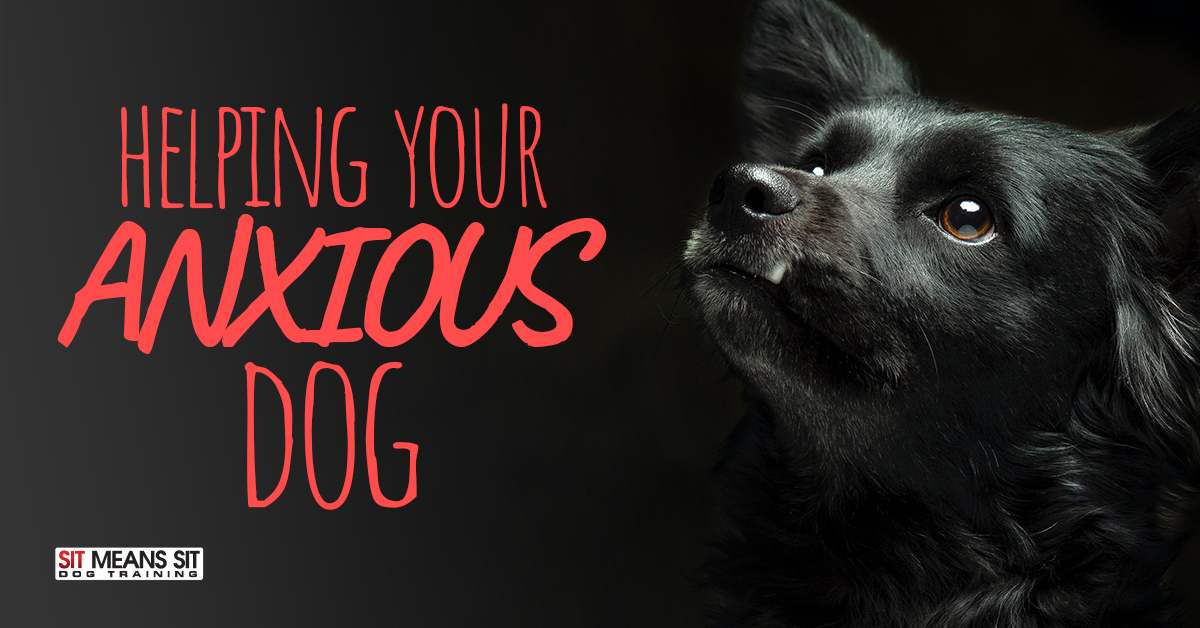
Helping Your Anxious Dog
Dog anxiety is normal and healthy in all breeds, and can affect each dog differently. However, if left unchecked, it can develop into an anxiety disorder leading to behavioral and other issues. Some dogs may have a brief anxious reaction, while more anxious dogs have greater consequences.
Causes
According to the AKC, there are numerous causes of anxiety. The most common are fear, separation, and aging.
Fear-related anxiety could be related to:
- Loud noises, such as fireworks or thunderstorms
- Strange people or animals
- Visual stimuli, such as umbrellas or yard decorations
- New or strange environments,
- Specific situations, such as the groomer or vet’s office
- New or strange surfaces, such as grass or wood floors
Separation anxiety is due to dogs being uncomfortable alone or away from certain family members. The most common responsive behaviors is to urinate or defecate in the house, destroy furniture, and bark.
Age-related anxiety is often associated with CDS, or cognitive dysfunction syndrome. Similar to Alzheimer’s disease in humans, CDS in dogs often manifests as a decline in memory, learning, perception, and awareness, which causes confusion and anxiety.
Symptoms
There are several common and important symptoms to be aware of related to anxiety in dogs.
- Aggression, which is by far the most dangerous
- Urinating or defecating in the house, caused by working themselves up too much
- Drooling
- Panting
- Destructive behavior, generally around entry and exit points such as doorways and windows or their crate as they try to escape
- Depression
- Excessive barking
- Pacing
- Restlessness
- Repetitive or compulsive behaviors
Treatment
The first and best step in treatment is to consult your veterinarian. They can help identify the type of anxiety, causes and triggers, and the level of anxiety your dog faces. This helps them determine a treatment plan as well. These treatments may include:
- Training and counterconditioning includes replacing your dog’s response to the responsible stimuli and desensitizing your dog to the stimuli in small doses.
- Anxiety medications could be helpful, such as SSRIs and antidepressants. For stressful events benzodiazepine can be used, and selegiline is helpful for senior dogs with CDS. Natural therapies and products are another method for reducing stress as well.
- Using CBD oil has been found to reduce anxiety, among other conditions, in both dogs and humans. If you are interested in this method, consult with your veterinarian. CBD products are not yet regulated and your vet can point you in a reputable direction.
Prevention
Since we can’t predict how anxious your dog will be, or if it will develop into something more serious, it is a dog idea to help dogs deal with anxiety.
- Body language tells us when a dog is anxious, which can then be spun into a positive experience.
- Proper socialization can help limit the development of anxiety and exaggerated responses.
- Obedience training allows dogs to prevent and manage their anxiety, establishing trust in a healthy relationship.
- Exercise and nutrition are critical for your dog’s developmental, physical, and mental health, decreasing the chances of destructive behavior.
- Situational avoidance is important for a dog diagnosed with anxiety issues.
Not all anxiety sources can be avoided, so it is best to know what to look for and when, and how to handle the symptoms. If you have concerns about your dog’s anxiety, consult your veterinarian to aid in discovering the source and planning the best treatment.
